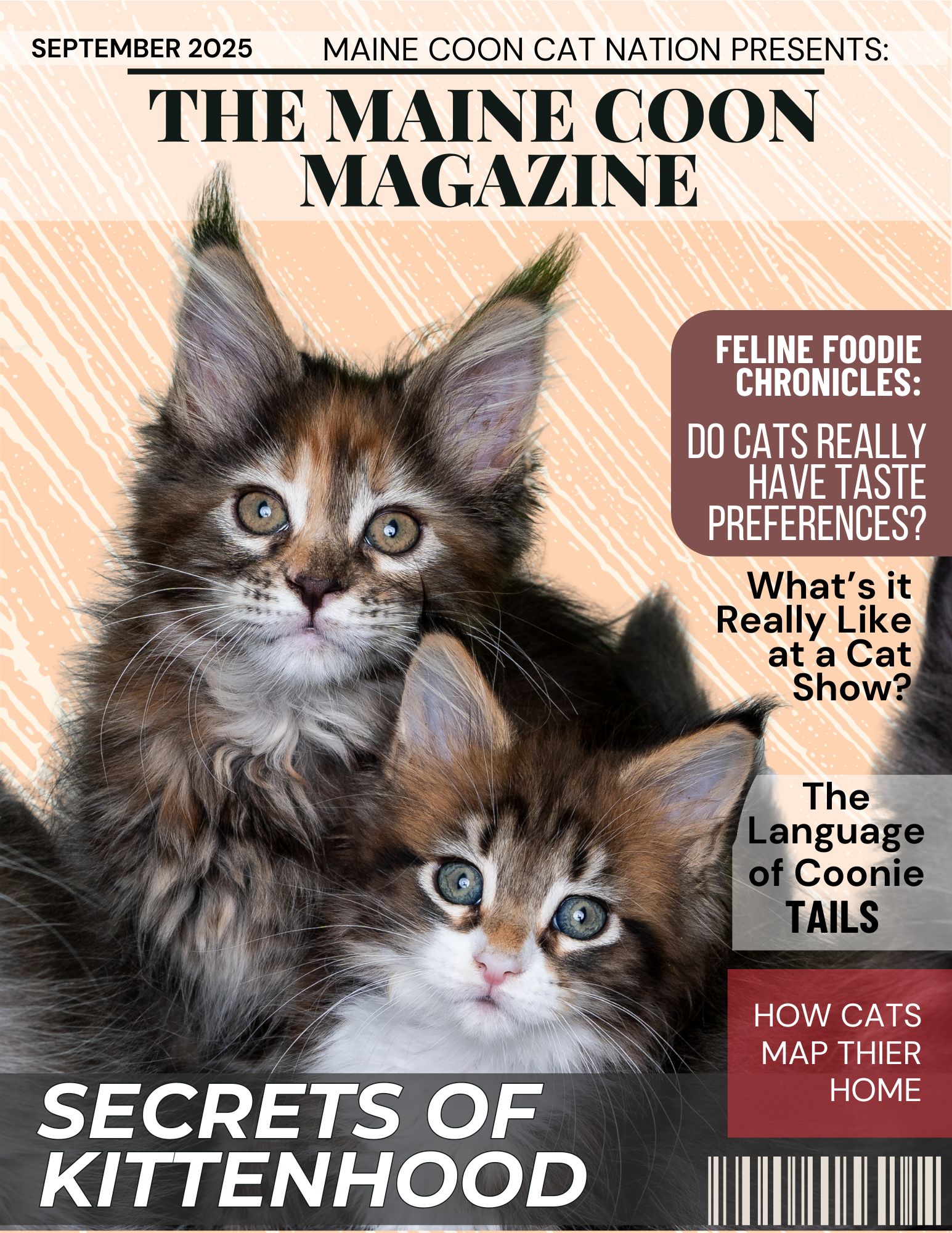- Home
- Maine Coon Grooming
- How to Clip Cat Claws
Disclosure: this site is reader-supported. When you buy through links on our site, we may earn a small commission, at no extra cost to you.
How to Clip Cat Claws Safely
Most cats nowadays are not declawed, which means we need to know how to clip cat claws.
With a little practice, you will get a routine down and be able to trim your Maine Coon's nails safely and quickly.
If you like this, you'll love our fun, free Daily Digest!

"Why Do I Need to Know How to Clip Cat Claws?"
Regular clipping is part of routine care. It helps keep your Maine Coon comfortable, prevents damage to your home, and reduces the risk of injury to both your feline friend and yourself.
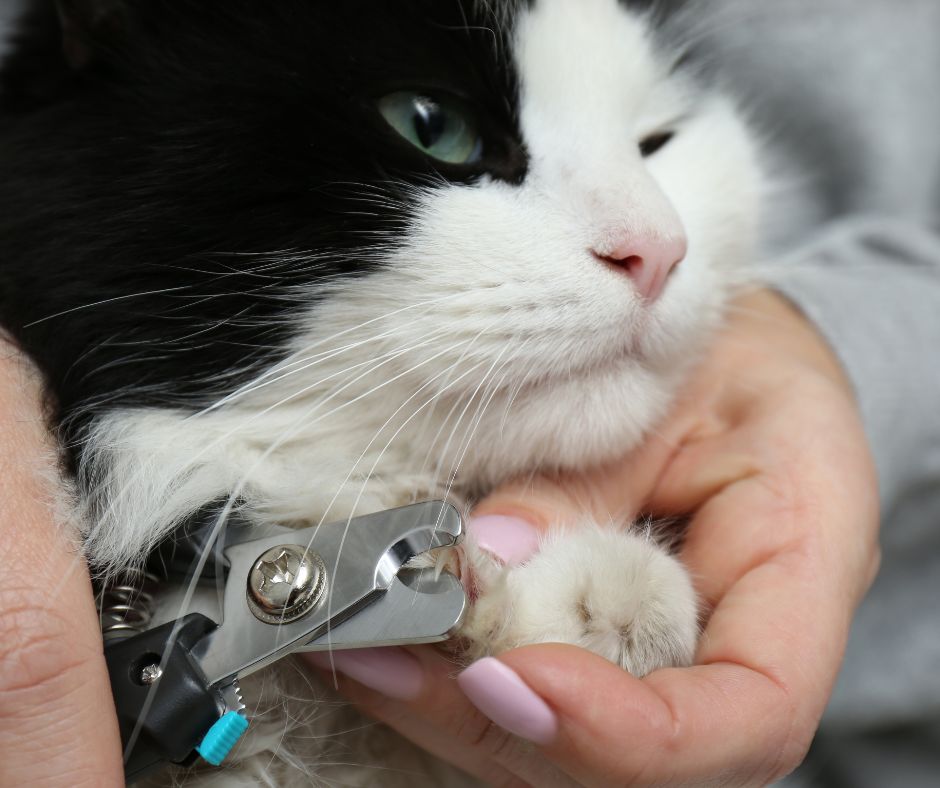
If a cat's claws are never clipped, some issues can arise:
Overgrowth: They will continue to grow, becoming long and sharp. Over time, they may curl back into the paw pads, causing pain, discomfort, and even infection.
Damage to Furniture and Skin: Without regular trimming, they can easily snag on carpets, furniture, and even human skin.
This can lead to torn nails or scratches, which can be painful for both kitty and owner.
Difficulty Walking: Overgrown claws can affect your Coonie's ability to walk comfortably. They may alter their gait to avoid putting pressure on their paws, leading to joint and muscle issues over time.
Behavioral Issues: Cats may become more aggressive or anxious if they become a source of discomfort, leading to behavioral changes like increased scratching or reluctance to be handled.
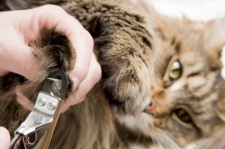
These are all good reasons to learn how to clip cat claws! It's actually very quick and easy.
Luckily, Maine Coons are notoriously chill kitties, and cooperative when being handled.
Make it a part of your regular "cat-spa day," and you'll both feel more comfortable.
Clipping Made Easy - Keep Those Claws in Check!
Trimming them might seem tricky, but with a little practice, it can be a stress-free routine for both of you.
How to clip cat claws? The key is to avoid cutting the quick - the pink area inside the nail that contains nerves and blood vessels.
When clipping, focus on just trimming the sharp, curved tip of the claw.
For light-colored nails, the quick is usually visible as a pinkish area inside.
But what about dark or black nails of a Black Maine Coon?
Here’s a tip: Look at the surface of the claw after you clip. If you see a black or dark spot in the center, you're getting close to the quick and should stop trimming.
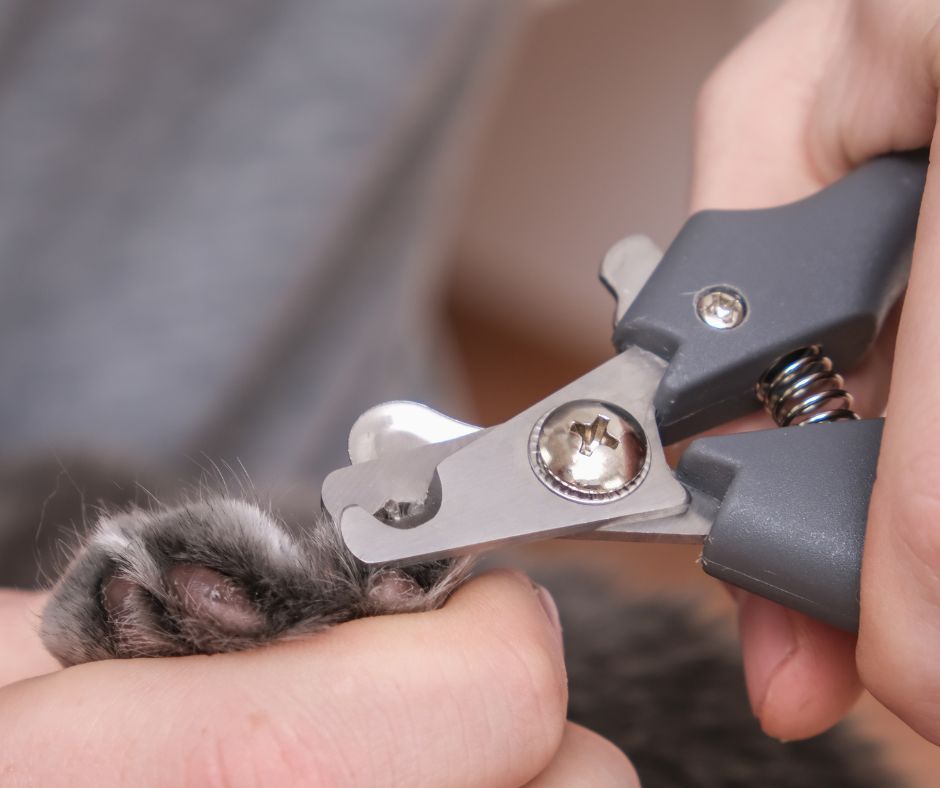
If you are like me, you might really want to see where the quick is before trimming.
In this case, you can take a look at the side of the nail in direct sunlight, such as near a window on a sunny day.
Or, you can use a flashlight placed directly under the side of the nail (aimed at your face) while you look down through the side it.
This should show you the quick, even in black nails! You'll need to remember where it was, set down your flashlight, and clip.
To make things easier, start by clipping just a tiny bit off the tip. Use a well-lit area, and don't hesitate to reward your kitty with a treat afterward to create a positive experience.
"My Cat's Nails Are Bleeding!"
If you accidentally hit the quick while trimming and there's bleeding, don't panic - this is a common mistake. Here's what to do:
- Stay Calm: Your cat might be startled, so keeping calm will help soothe them.
- Apply Pressure: Use a clean cloth or gauze to apply gentle pressure to the nail. This helps stop the bleeding.
- Styptic Powder: If you have styptic powder on hand, apply a small amount to the bleeding. It helps clot the blood quickly. If you don’t have styptic powder, cornstarch or flour can also work in a pinch.
- Keep Your Cat Calm: Hold him gently but securely until the bleeding stops, which usually takes a few minutes.
- Monitor: Keep an eye on the nail for any signs of infection, like swelling or continued bleeding. If you're concerned, contact your vet for advice.
Remember, accidents happen! With a little care, he will be just fine.
"What Kind of Clippers Should I Use?"
Guillotine-style clippers are a type of pet nail trimmer designed to make claw clipping easier and more precise.
They feature a small hole where you insert the cat's claw. When you squeeze the handle, a blade slides up and slices through , similar to a guillotine.
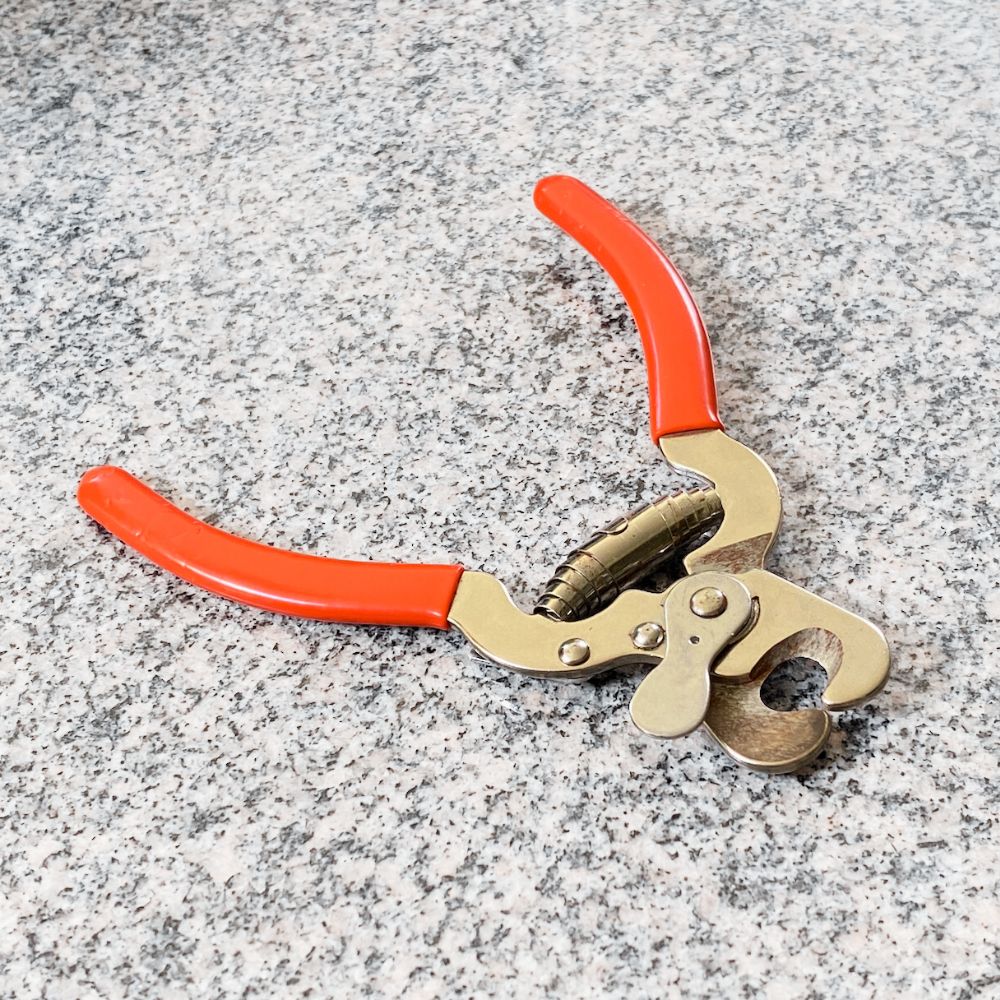 Guillotine-style clippers
Guillotine-style clippersKey Features:
- Single-Blade Design: The blade cuts from one side, which some people find easier to control compared to scissor-style clippers.
- Small Opening: The claw fits into a small opening, which helps in positioning the nail correctly for a clean cut.
- Ease of Use: These clippers are especially useful for those who are new to trimming because they allow for a quick, straightforward cut.
Tips for Using Guillotine Clippers:
- Make sure the blade is sharp to avoid crushing the nail.
- Position the claw so only the tip is inside the opening—avoid getting too close to the quick.
- Hold the clippers steady and use a gentle but firm squeeze to make the cut.
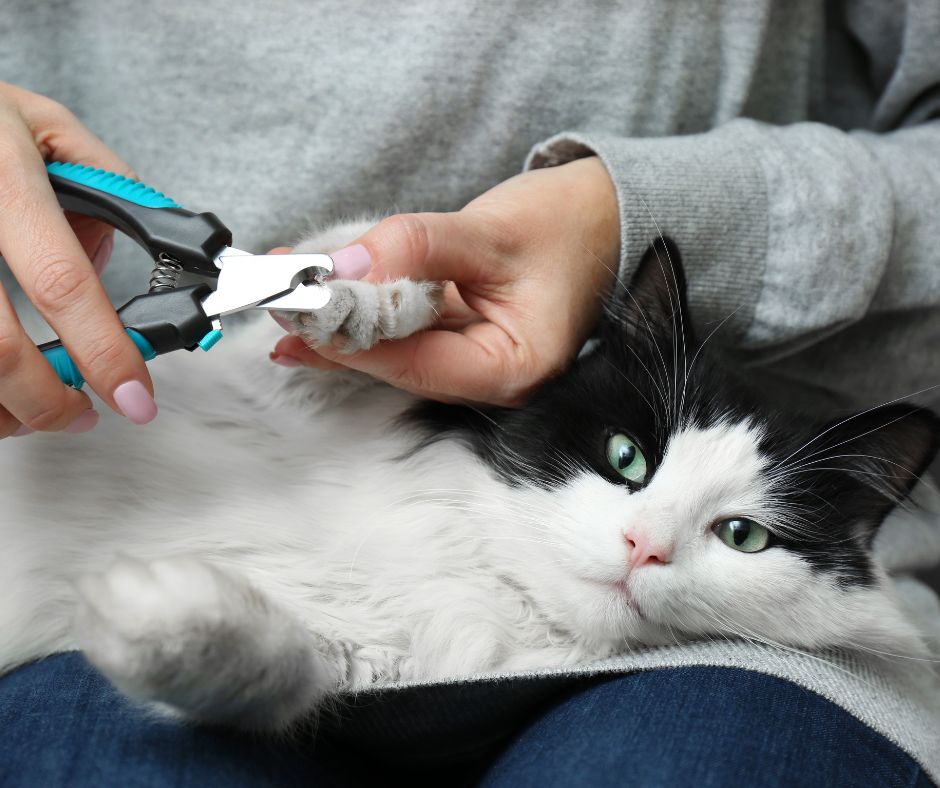
Frequently Asked Questions (FAQ's) About How to Clip Cat Claws:
How often should I clip my cat's claws?
How often should I clip my cat's claws?
They should generally be trimmed every 2-4 weeks, depending on how fast your kitty’s nails grow and how much they naturally wear down through scratching.
What should I do if my cat won't sit still for nail trimming?
What should I do if my cat won't sit still for nail trimming?
If she is fidgety, try trimming one or two claws at a time, using treats and positive reinforcement.
Wrapping her in a towel, leaving one paw out, can also help keep them calm. Having another person to hold them and pet them is very helpful too.
Is it painful for a cat to have their claws clipped?
Is it painful for a cat to have their claws clipped?
When done correctly, not at all! However, cutting into the quick can cause pain and bleeding. It's important to only trim the sharp, curved tip.
Can I use human nail clippers on my cat's claws?
Can I use human nail clippers on my cat's claws?
While it's possible, and some people do it, it's not recommended.
Pet-specific clippers, like guillotine or scissor-style clippers, are designed to safely and cleanly trim nails without crushing or splitting them.
How do I know if I've cut too close to the quick?
How do I know if I've cut too close to the quick?
If you see a dark spot or dot on the surface of the claw after cutting, you're getting close to the quick. Stop trimming at this point to avoid hitting it.
Once you've learned how to clip cat claws, regular nail trimming can become a smooth part of your grooming routine. Your Coonie will thank you for it!
Top of How to Clip Cat Claws
« Back to Maine Coon Grooming
